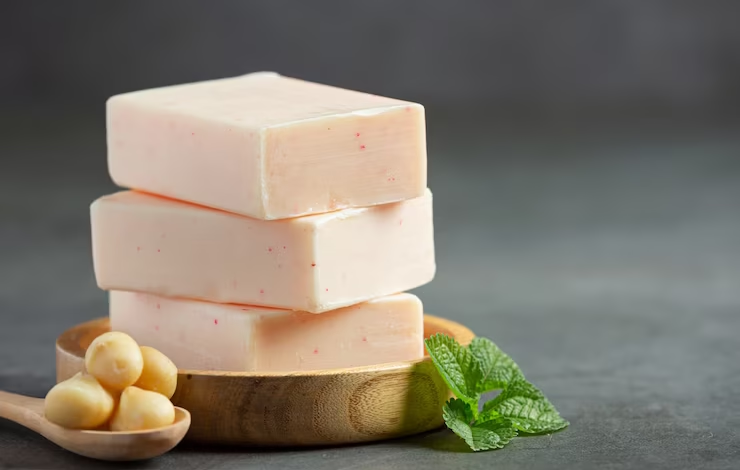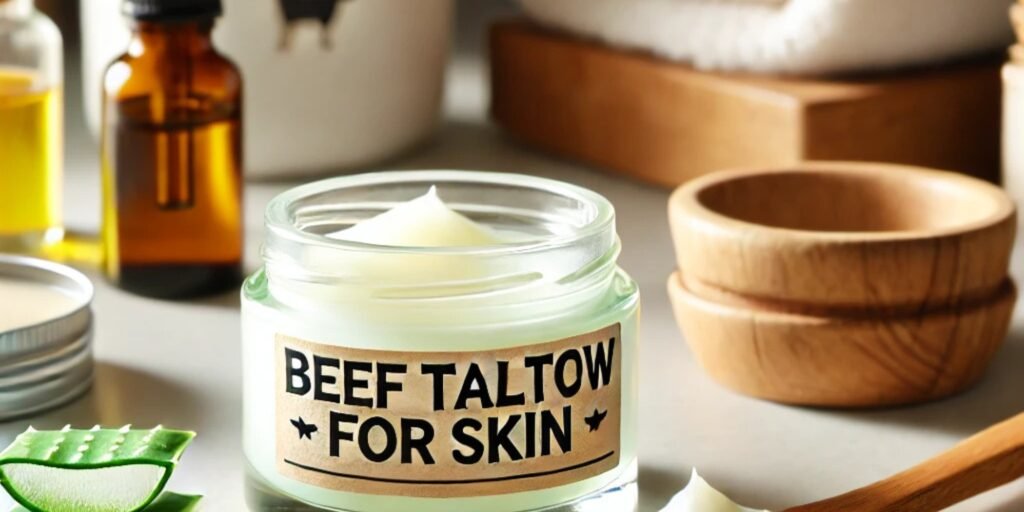What Is Beef Tallow? Benefits, Uses & How to Make It at Home

Beef tallow has made a remarkable comeback in recent years, thanks to growing interest in traditional cooking fats and clean eating. Once a staple in kitchens around the world, beef tallow is now being rediscovered by home cooks, chefs, and health-conscious individuals alike. But what exactly is beef tallow? What are its health benefits, and how can you use it in your kitchen? In this comprehensive guide, we’ll explore what beef tallow is, its surprising benefits, common uses, and provide a step-by-step guide on making it at home.
What Is Beef Tallow?
Beef tallow is a rendered form of beef fat. Specifically, it’s made by slowly cooking down the fat from cows, typically the suet (the hard fat around the kidneys and loins), until the moisture evaporates and the pure fat is left behind. Once cooled, tallow solidifies into a creamy, white substance with a high smoke point and a mild flavor.
Beef tallow was once a kitchen essential used for frying, baking, and even making soap and candles. However, with the rise of vegetable oils and processed fats in the 20th century, tallow fell out of favor. Fortunately, it’s now gaining popularity again among those seeking natural, nutrient-dense alternatives to modern seed oils.
Nutritional Profile of Beef Tallow
Beef tallow is composed almost entirely of fat and contains no carbohydrates or protein. It includes a mix of saturated fat, monounsaturated fat, and a small amount of polyunsaturated fat. Here’s a breakdown per tablespoon (approx. 13 grams):
- Calories: 115
- Total Fat: 13g
- Saturated Fat: 6g
- Monounsaturated Fat: 5.4g
- Polyunsaturated Fat: 0.5g
- Saturated Fat: 6g
- Cholesterol: 12mg
- Vitamins: Contains fat-soluble vitamins like A, D, E, and K (especially if sourced from grass-fed cattle)
Grass-fed beef tallow is especially rich in conjugated linoleic acid (CLA) and omega-3 fatty acids, which are known for their anti-inflammatory and heart-supportive properties.
Health Benefits of Beef Tallow

Beef tallow isn’t just a cooking fat—it’s a powerhouse of health benefits when consumed in moderation and sourced responsibly. Here’s why you might consider adding tallow to your kitchen arsenal:
1. High Smoke Point
Beef tallow has a high smoke point of around 400°F (204°C), making it ideal for frying and sautéing. Unlike vegetable oils, which oxidize at high temperatures, tallow remains stable and doesn’t release harmful free radicals.
2. Rich in Healthy Fats
Contrary to outdated beliefs, saturated fats—like those found in tallow—play a vital role in hormone production, brain function, and immune support. Tallow also contains monounsaturated fats, which are heart-healthy.
3. Supports Skin Health
Topical use of beef tallow has been praised for its ability to moisturize and nourish the skin. It closely resembles the natural oils produced by our skin (sebum), making it effective in promoting soft, healthy skin.
4. Nutrient Dense
Beef tallow from grass-fed cows is rich in fat-soluble vitamins A, D, E, and K, which are essential for vision, bone health, immune function, and more.
5. Promotes Satiety
Due to its high-fat content, cooking with beef tallow can help you feel full and satisfied, reducing unnecessary snacking and supporting weight management.
Common Uses for Beef Tallow
Beef tallow is a versatile ingredient with applications that go far beyond the frying pan. Here are some of its most popular uses:
1. Cooking and Frying
Tallow’s high smoke point and mild flavor make it perfect for deep frying, pan-frying, or roasting vegetables, meats, and potatoes.
2. Baking
Use beef tallow in place of butter or shortening in pie crusts, biscuits, and pastries for a flaky, rich texture.
3. Skin Care
Tallow is increasingly used in natural skincare products. Its moisturizing and healing properties make it ideal for balms, lotions, and salves.
4. Candle and Soap Making
Historically, tallow was the go-to fat for making candles and soap due to its clean burn and lathering properties.
5. Pet Food Supplement
Some pet owners add a small amount of tallow to their dog or cat’s diet for its nutritional benefits.
How to Make Beef Tallow at Home
Making beef tallow at home is surprisingly simple. All you need is raw beef fat (preferably from a grass-fed source), a sharp knife, a slow cooker or heavy pot, and some jars for storage.
Ingredients:
- 2–5 pounds of beef suet or raw fat trimmings
- Optional: Cheesecloth for straining
Instructions:
Step 1: Trim and Chop the Fat
Start by cutting the fat into small chunks. The smaller the pieces, the faster and more efficiently they will render.
Step 2: Render the Fat Slowly
Place the fat in a large pot or slow cooker. Set it on low heat and allow the fat to melt slowly over several hours (4–6 hours is typical). Stir occasionally to prevent burning.
Step 3: Strain the Tallow
Once the fat has fully melted and the solid bits (cracklings) have browned, pour the liquid through a cheesecloth or fine strainer into a clean, heat-safe jar. This removes any impurities.
Step 4: Cool and Store
Let the tallow cool at room temperature. It will solidify into a creamy white fat. Store in an airtight container in the refrigerator for up to 3 months or in the freezer for up to a year.
Tips for the Best Homemade Tallow
- Use suet for a cleaner and more neutral flavor.
- Avoid high heat to prevent burning the fat.
- Strain thoroughly to extend shelf life.
- For best results, source fat from grass-fed, pasture-raised beef.
Where to Buy Beef Tallow
If you’re short on time or don’t want to render your own, beef tallow is available for purchase both online and in health food stores. Look for:
- Grass-fed and pasture-raised labels
- Organic certification (optional)
- Non-hydrogenated tallow (free of additives)
Some reputable online sources include:
- US Wellness Meats
- Fatworks
- Epic Provisions
Is Beef Tallow Better Than Other Cooking Fats?
When comparing beef tallow to common cooking oils, it holds its own—especially when cooking at high temperatures.
| Fat/Oil | Smoke Point | Saturated Fat | Health Considerations |
| Beef Tallow | ~400°F | High | Stable, nutrient-dense, natural |
| Olive Oil | ~375°F | Low | Great for low-heat cooking, rich in antioxidants |
| Canola Oil | ~400°F | Moderate | Highly processed, may contain GMOs |
| Coconut Oil | ~350°F | High | Good for baking, strong flavor |
| Butter | ~300°F | High | Adds flavor but burns easily |
Verdict: Beef tallow is an excellent all-purpose cooking fat, especially when you need something that won’t break down at high temperatures.
Frequently Asked Questions (FAQs)
Is beef tallow healthy to eat?
Yes, when consumed in moderation and sourced from grass-fed cows, beef tallow is a healthy fat rich in nutrients and healthy fats.
Does beef tallow taste like beef?
Tallow has a mild, savory flavor, but it does not taste strongly of beef. It enhances the taste of dishes without overpowering them.
Can I reuse beef tallow for frying?
Yes, beef tallow can be reused multiple times for frying. Just strain it after each use to remove food particles and store it in a clean container.
Is beef tallow keto-friendly?
Absolutely. Beef tallow is 100% fat and contains zero carbs, making it perfect for keto and low-carb diets.
Is tallow better than butter for cooking?
It depends on the application. Tallow has a higher smoke point, making it better for frying, while butter adds a rich flavor to baked goods and sauces.
Last Thoughts: Embrace the Power of Beef Tallow
Beef tallow is more than just old-fashioned cooking fat—it’s a nutrient-dense, versatile, and sustainable ingredient that belongs in every health-conscious kitchen. Whether you’re frying crispy potatoes, baking a savory pie, or whipping up a nourishing balm for your skin, beef tallow offers a natural solution.
Making your own tallow is a simple, cost-effective way to reduce waste and connect with traditional culinary practices. With its long shelf life, high smoke point, and wide range of uses, beef tallow is truly a hidden gem.




